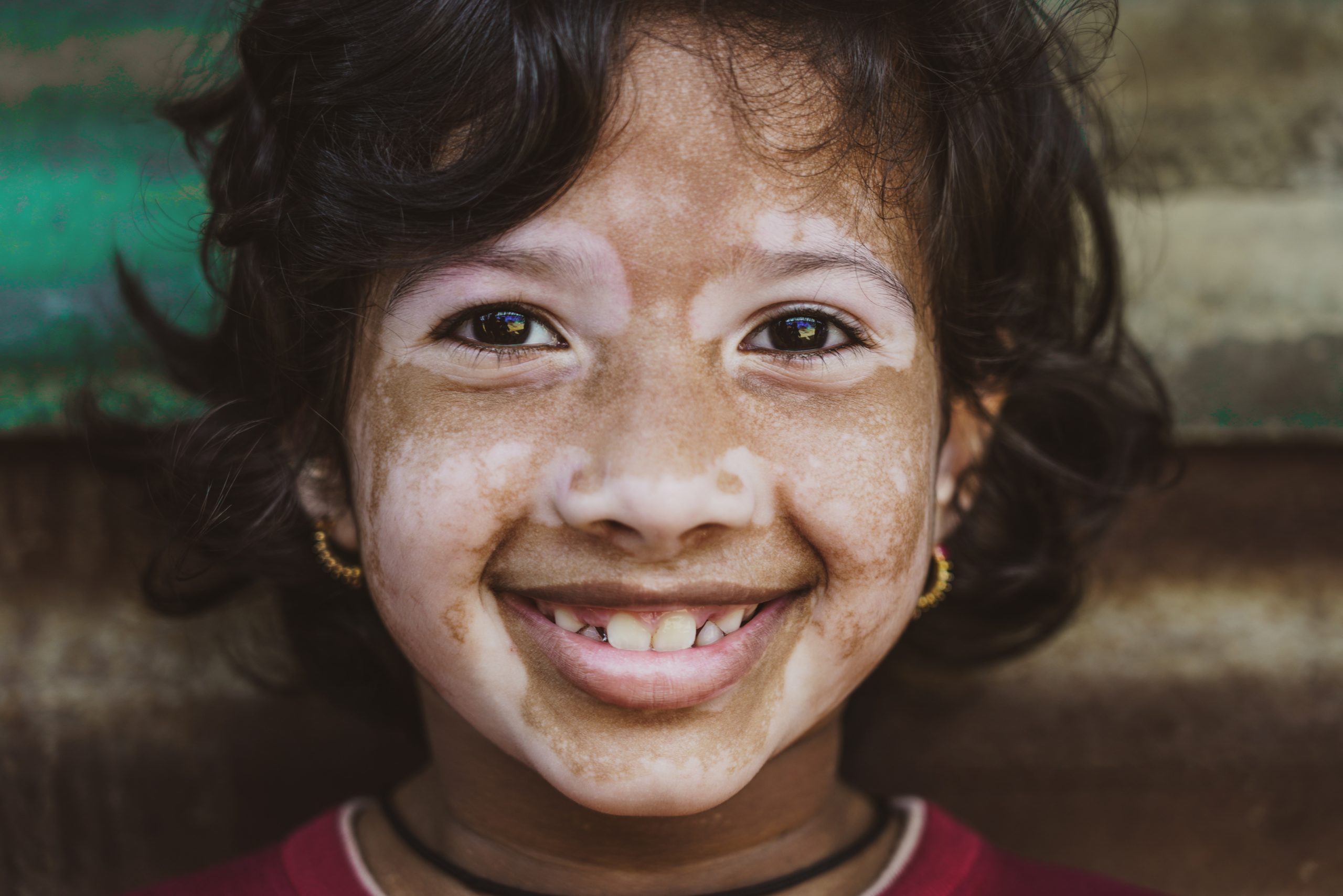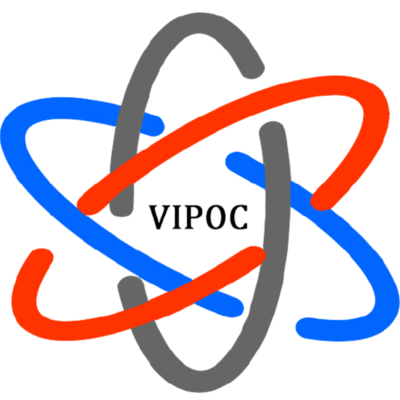
Introduction
Vitiligo is an acquired, chronic, maybe autoimmune, pigmentary disorder characterised by white macules and patches, due to the progressive loss of cutaneous melanocytes and to an abnormality in their normal function [1].
Usually, it starts in childhood or young adult: it has been estimated that about 50% of patients develop vitiligo before the age of 20 years and about 25% of them develop the disease before the age of 8, with a mean age of 4 – 5 years [2].
In pediatric age, vitiligo may represent a psychological trauma for both patients and their parents, resulting in emotional disorders (e.g. anxiety, depression), poor quality of life scores, and low self-esteem [3].
Treating vitiligo and supporting patients to live their stigmatising condition, is the first aim of a dermatologist. Fortunately, nowadays different treatments, both medicals and surgical, are available.
Table 1
Current traditional therapeutic options for vitiligo in children
| Treatment modality | Drugs | Mechanism of actions | Side effect |
|---|---|---|---|
| Topical treatments | Calcineurin inhibitors | Immunomodulation | Burning sensation, erythema, transient pruritus; risk of malignancies? |
| Calcipotriol | Repigmentation, immunosuppression | Transient burning or irritation | |
| Corticosteroids | Immunomodulation | Epidermal atrophy. striae, telangiectasia, glaucoma, tachyphylaxis, hypothalamus-pituitary axis suppression, Cushing’s syndrome, growth retardation | |
| Systemic treatments | Corticosteroids | Immunomodulation | Glaucoma, tachyphylaxis, hypothalamus-pituitary axis suppression, Cushing’s syndrome, growth retardation |
| Phototherapies | PUVA (12yo), Topical PUVA, Topical PUVA sol, nbUVB | Repigmentation, immunomodulation | Erythema, itching or burning sensation; chronic actinic damage; psoralen toxicity (nausea, vomiting, abdominal pain, liver toxicity, cataracts) |
Other therapeutic options:
Combined therapies Camouflage
Depigmentation therapy (monobenzyl ether of hydroquinone)
Cognitive therapy and psychological support
Topical treatments
Topical corticosteroids (TCs)
The efficacy of topical corticosteroids in the treatment of vitiligo, especially of localised forms on the face and other body’s area, is well – known since long time [4].
Steroids act as anti-inflammatory and immunosuppressant agents. Even if different classes of steroids are now available, the mid- potent ones (e.g. betamethasone dipropionate 0.05% cream, 0.05% clobetasol propionate ointment) are usually preferred for the treatment of young patients. The drugs may be applied once or twice a day, in consecutive or on alternate days. Different studies report a response rate of 45 – 60% in childhood vitiligo, with best outcome in inflammatory vitiligo [5].
Even if their use should be prolonged for several months, TCs are quite safe only if used for few weeks, not more than 2 – 4 months, to avoid local side effects (e.g. atrophy, striae, telangiectasia, hypertrichosis, acneiform eruption) and systemic ones due to the percutaneous absorption (e.g. tachyphylaxis, suppression of hypothalamic-pituitary-adrenal axis, Cushing’s syndrome and growth retardation). In detail, the use of TCs on vitiligo patches of the face should be avoided or limited in time because of the higher risk of topical side effects, including glaucoma [6][7].
Topical calcineurin inhibitors (TCI)
Topical calcineurin inhibitors (tacrolimus and pimecrolimus) are considered valid alternatives to TCs for the treatment of localised forms of vitiligo. They act as immunomodulator agents: by blocking calcineurin, they inhibit the cytokines expression [8].
As TCs, TCIs are indicated for the treatment of localised forms of vitiligo, also for the facial lesions where they seem to be safer than steroids. Usually, TCIs are prescribed twice a day.
Tacrolimus 0.1% seems to be more effective than pimecrolimus 1%, achieving a repigmentation rate similar to that of topical clobetasol propionate (0.05%) [9]. Pimecrolimus 1% is another valid option for the treatment of facial lesions, especially on the thinnest cutaneous areas, such as eyelids [10].
Usually, TCIs are safe and well tolerated. The most common side effects are burning sensation, transient pruritus and erythema at the side of the application. Because of the potential risk of malignancies (e.g. skin cancers and lymphoma), TCIs cannot be used in children < 2 years. The major limit to treat vitiligo with CIs is due to their costs [6].
Calcipotriol
Calcipotriol is a synthetic vitamin D3 analogue, which has been used for many years in the treatment of psoriasis for its ability to regulate the epidermal turnover.
Its use in vitiligo patients, start with the observations that its topical application, on psoriatic lesions, may cause perilesional hyperpigmentation. Even if the exact mechanism of action has to be elucidated, calcipotriol seems to stimulate melanogenesis and to halt the melanocytes destruction by T – cells [11].
Calcipotriol is applied once a day. It seems to be less effective than TCs, with variable results in term of repigmentation rate. Interesting, calcipotriol seems to stimulate repigmentation in both treated and untreated skin, and to continue its action also after treatment termination, leading to hypothesise a systemic effect of the drug applied topically [12].
The drug is well tolerated, and the most common side effects are represented by a transient burning sensation or irritation at the site of application. The treated sites should not be exposed to phototherapy to avoid cutaneous hyperpigmentation.
Systemic treatment
Systemic corticosteroids (SCs)
In patients affected by unstable vitiligo, another therapeutic option is the systemic administration of corticosteroids (e.g. betamethasone, methylprednisolone), which seem to be useful to stop the progression of the disease and to induce repigmentation. Due to the potential well-described side effects, SCs are usually administered for a short period or in pulsed a regimen [13][14]. The dosages of SCs are usually decided by the patient’s characteristics. Recently, an oral mini-pulse therapy (OMP) has been proposed [15]. It consists of the morning intake of betamethasone (0.1 mg/kg body weight) on two consecutive days in a week for 12 weeks. After that, patients have to assume 1 mg/month for the following three months. The clinical results seem to be good, with minimal risk of side effects.
Phototherapies
Ultraviolet radiations (UVR), both in the range of UVB and UVA, are considered as a first line therapy especially for extensive vitiligo, because of their good efficacy and tolerance. The effects of UVR are both immunosuppression and stimulation of the melanocytes activity [16].
Today, a range of phototherapies are now available: oral PUVA; topical cream PUVA, bath PUVA; PUVA sol; narrow-band UVB. Broad band UVB should no longer be used because of the sunburn risk and low efficacy.
PUVA therapy
PUVA therapy consists of the oral intake of a photosensitizing psoralen (e.g. 8 – methoxypsoralen, 5 – methoxysporalen or 4, 5, 8 – trimethylpsoralen) followed by exposure to photoactivating UVA light (320 – 400 nm). Treatment is performed 2 – 3 times a week, increasing the dose of UVA on the base of patient’s response. Because of psoralen’s toxicity (e.g. gastric and ocular damage), PUVA therapy should not be performed in children < 12. The rate of repigmentation after oral PUVA is about 75% in 50-60% of the children with vitiligo [4]. The possible side effects are due to both radiations and psoralens. While the most common short- time side effects are erythema, pruritus, xerosis and phototoxic reactions; the long-term ones include chronic actinic damage and carcinogenesis [16].
Topical PUVA
A valid therapeutic option for children with vitiligo is the topical PUVA. It consists of the application of 0.1 – 0.01% 8-methoxypsoralen in hydrophilic petrolatum or ethanol onto the vitiligo skin, followed by exposure to UVA-irradiated with a dose of 0.12 – 0.25 J/cm². The treatment is done 1 – 3 times a week, increasing the UVA dose until mild erythema will develop. The treatment provides good results, similar to the systemic PUVA [4]. The acute and chronic side effects, due to UV radiations, are well described.
Topical PUVA sol
Similar treatment is the topical PUVA sol: after the topical application of a psoralen cream, the patient will be exposed to sunlight. Although the proven efficacy of the treatment, the risk of acute and chronic actinic damage are well documented [17].
Bath PUVA
Patients take a warm bath with 0.5 -1.0 mg/l 8 – MOP for 20 min before they are exposed to UVA [18][19].
Narrow – band UVB (nb – UVB)
Today, narrow-band UVB (nb – UVB, 311 nm) is considered a valid and safeness therapy for vitiligo, especially for children due to the lack of psoralens. It consists in the exposure to nb – UVB at the starting dose of 0.1 mJ/cm², followed by 20% increasing dose of UVR on a weekly basis, accordingly to the clinical response. Treatment is well – tolerated. The commonest acute side effects are pruritus and erythema. Apart from supposed photo-damages, long-term side effects are yet to be determined [16]. Recent studies show how nb – UVB is more active than topical and oral PUVA, and that the repigmentation achieved with nb – UVB is more persistent and more similar to the colour of the unaffected skin [20].
Combined treatments
In the last years, different types of combined therapies have been proposed for the treatment of vitiligo in children.
Topical corticosteroids may be used in combination with calcipotriol [20]. This type of association seems to provide better clinical results in term of repigmentation and fast response, also in patients who did not have a response to the use of steroids alone. Moreover, the combination calcipotriol -corticosteroids reduce the side effects due to each drug, leading to a safer treatment.
In progressive vitiligo, TCs may be associated to the oral ones [21]. Apart from the risks due to the steroids therapy, the protocol seems to be effective in halting the progression of the disease and in inducing skin repigmentation. Finally, a study underlines also how the combination of OMP to nb – UVB phototherapy should be superior in the treatment of unstable vitiligo, then the systemic corticosteroids used alone [22].
Topical treatments may also be associated to phototherapies. For example, many studies show how nb-UVB combined with different topical drugs (e.g. Corticosteroids, vitamin D analogues, tacrolimus, pimecrolimus, pseudocatalase) could be more efficacy than phototherapy alone [16][17][18][19][20] [21][22][23][24]. In case of a combination, both TCI and vitamin D analogues should be used after UVB, never before to avoid risks such as hyperpigmentation or skin cancer.
Cosmetic camouflage
Due to the deep psychological impact of vitiligo, which risks representing a real stigma for patients, the camouflage of vitiliginous areas is often recommended [25]. Today many products are available. The ideal cosmetic is non – allergenic, colour matching, easy to apply and to remove, water resistant and cost-limited.
Depigmentation therapy
Unresponsive, widespread vitiligo or universal forms may be addressed to a total depigmentation therapy with 20% monobenzyl ether of hydroquinone (MBEH) [26].
Cognitive therapy and psychological support
Among the different type of vitiligo’s treatment, cognitive therapy and psychological support are strictly recommended for children with vitiligo and their parents, especially in the cases where it is clear the impact of the skin disease on their quality of life [27].
Surgical therapies
Surgical therapies are not recommended in childhood vitiligo and must to be limited to patients with stable localised lesions, unresponsive to the more conventional therapies. Surgical techniques in young children have to be also avoided because of their natural body growth in which lesions tend to extends, and they’re difficult to stand still in the post-operative time [4][5][6].
Today, different types of surgical techniques are available (Table 2). Among them, the suction blister epidermal grafting (SBEG) is the best choice for childhood vitiligo.
Table 2
Surgical therapies for childhood vitiligo
| Technique | Mechanism of actions | Side effect | |
|---|---|---|---|
| Surgical therapies | Mini punch grafts, suction blister epidermal grafts (SBEG), thin Thiersch grafts, transplantation of epidermal cell suspension, cultured melanocyte suspension, and cultured epidermis, combined therapies | Correction of the pigmentary disease | Cost factor and time consumption; inability to treat large areas; risk of infections; transient hyperpigmentation of recipient or donor site; risk of Koebner phenomenon at the graft site |
Among the various surgical techniques, suction blister epidermal grafting (SBEG) has been found to be most convenient and effective for children and adolescents, with an excellent rate of repigmentation (> 75%) in over 80% of patients [28]. Face and lips obtain best results [29].
Other surgical procedures include mini punch grafts; thin Thiersch grafts; transplantation of epidermal cell suspension, cultured melanocyte suspension, and cultured epidermis. Finally, there is the possibility to combine surgical techniques with medical treatments. An excellent example is the microdermabrasion of cutaneous lesions, followed by the topical use of pimecrolimus 1% cream [30].
Apart for the normal problems due to an intervention (e.g. risk of infection), the major problems due to surgical vitiligo therapies are represented by the necessity of expert equipment, the cost and the time consumption. Treatments are not indicated in the case of large vitiliginous areas and/or in the case of active vitiligo. Finally, there are the risks of transient hyperpigmentation of recipient or donor site, and of Koebner phenomenon at the graft site.
Conclusions
Vitiligo’s treatment has two main goals: the first one is to halt the disease progression; the second one is to induce the lesions’ repigmentation, achieving an acceptable cosmetic result. In the last years, several therapeutic options, both medical and surgical, have been proposed for vitiligo. The choice of the best therapy for childhood vitiligo is based on various factors, such as patient’s age, psychological condition and expectation, distribution and extension of skin lesions, type of vitiligo (stable or not), availability and cost of the therapeutic options.
Image credit: Bhanu Vishwanadhula




